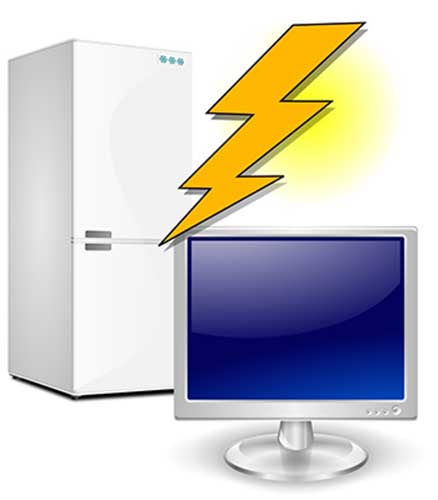If you live in Australia, then space conditioning—heating and cooling—probably uses most of the energy in your home. However, according to the Australian Government, about a third of the energy used by residential customers powers appliances.

First: Refrigerators and Freezers
Your most energy hungry appliances are the ones that are on all the time. Refrigerators are the biggest energy users in most households. Appliances such as dishwashers, dryers and ovens are very intensive energy users, but they simply aren’t drawing power long enough to compete with refrigerators and freezers.
Second: Televisions
The second biggest energy hog in the average Australian home may surprise you. It’s the television. Here’s why: televisions are getting bigger and in many households, they are on all the time. How much energy the TV uses depends on the technology. Of the new flatscreen technologies, plasma is the most energy intensive and LED is most energy efficient. Energy use grows with the screen size. For example, a 64 inch LED uses twice the power of a 32 inch LED.
Even families who keep the TV switched off when they’re not watching it may be wasting energy. Televisions use standby power; it makes them faster and easier to switch on. However, standby power costs. Manufacturers have been working on reducing the energy used by appliances on standby. The power drain in a new set is fairly small, perhaps a watt a day. However, it’s not just the TV set using standby power; it’s the cable or satellite boxes, PVRs, DVD players, sound systems and other associated devices, as well.
The moral of the story? If you want to save energy, keep your television and the rest of your entertainment system on a power strip with a switch that’s usually kept in the ‘off’ position—and buy energy efficient appliances.
Buy Energy Efficient Appliances
Like televisions, refrigerators have improved greatly, and most of that improvement has come in the form of reduced energy consumption. A new fridge will use far, far less energy than one that’s even ten years old. However, there is very little in a refrigerator that can break, so cheap fridges tend to be kept for many years. If you’re running an old fridge or freezer, then you may want to consider replacing it with a new, more efficient model.
When buying new appliances, look for energy labels. Most come with an EnergyGuide rating, with a graph that compares how much energy they use with other appliances in the same category. Or, look for an Energy Star label; they’re only applied to appliances at the very top of their category in energy performance. The national government also keeps an updated database on appliances and their energy performance.
Of course, Fowles is a great place to buy appliances. Our Home Renovator’s Auction catalogue and video will give you a head start on next Wednesday’s appliance selection, and you could save 90% on a new, more efficient fridge or television.
